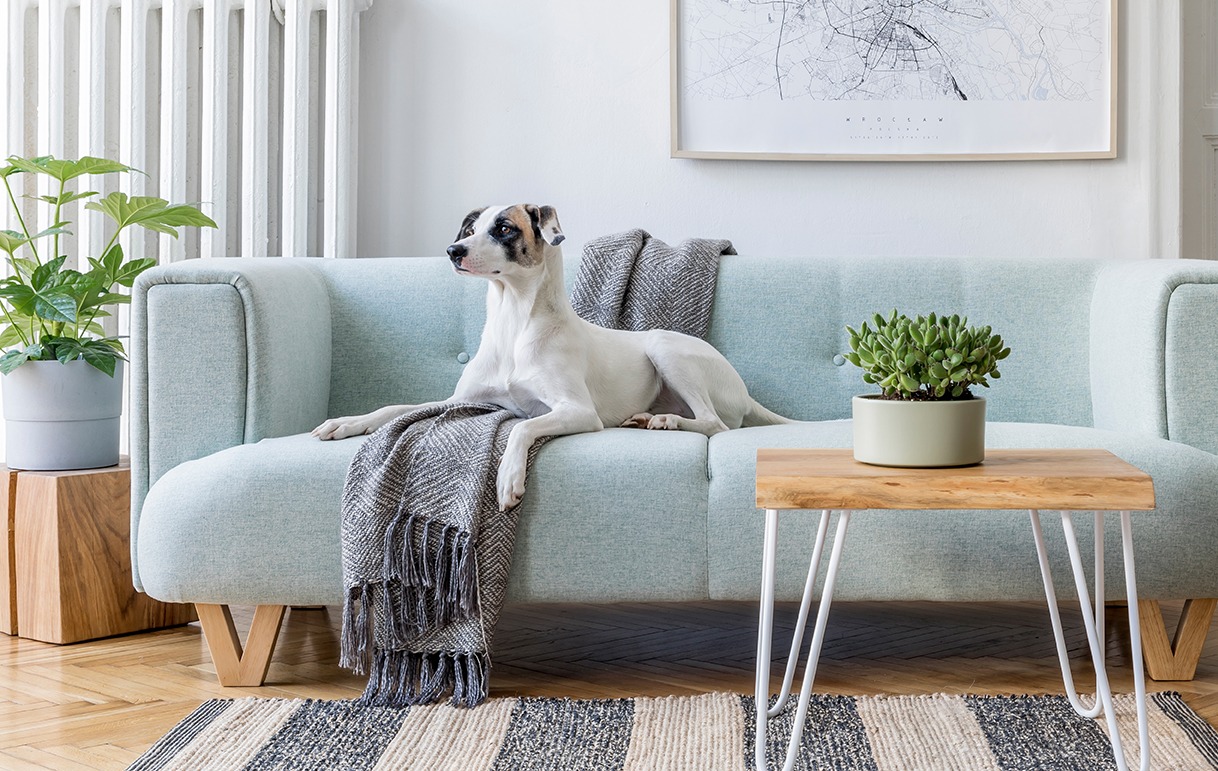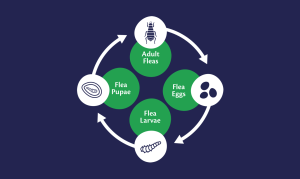There are fewer things more persistent and annoying than the parasites that our pets can bring into our home.

As well as being rather unpleasant, fleas, ticks and worms can result in infestations, which can prove to be potentially dangerous for our pets, our homes and even us.
Fleas can be particularly annoying and can easily grow into a huge problem for the whole household. And if you’ve spotted an infestation, the process for treating the problem can all seem a little daunting – especially if you’re a new pet owner.
It’s important to know the tips to avoid them and about which products to use and when, to not only get rid of adult fleas, but to kill fleas at each stage of the lifecycle to prevent re-infestation.
What are fleas and ticks and how do they get into your home
Fleas are small blood sucking parasites which feed on animals. Because they’re wingless, their main way of getting around is by jumping – sometimes distances of 100 times their own body length. They’ll jump onto your pet or even you whilst you’re out on a walk and once they’ve latched on, they’ll then start feeding.
They can be hard to spot, but if you see fleas on your pet then they’ll definitely be in your home too. Even just one female flea can lay up to 50 eggs a day, meaning a single flea can easily infest your pet and your home.
And although ticks won’t necessarily infest your home, they can be just as menacing and can be potentially dangerous as they can spread blood borne diseases. It’s worth checking your pet regularly by running your fingers through their coat feeling for a little lump, looking inside their ears and between their toes. They are usually easy to see and feel.
How long can a flea infestation last?
If you’ve had an infestation before, you’ll be well aware of how unpleasant they are and how hard they can be to get rid of. To eradicate the problem fully, you’ll need to understand and break the flea’s life cycle on your pet and in the home.
Undisturbed and without a blood meal, an adult flea can live more than 100 days and live for two to three months! And it’s not just a seasonal issue as they can live in our warm, centrally heated homes throughout the year.
The flea’s life cycle:
- Adult fleas: jump onto pets to feed. Females lay eggs, which results in lots more fleas!
- Flea eggs: fall off wherever your pet goes – this could be anywhere in the house, but particularly on their favourite sleeping spot…
- Flea larvae: flea eggs hatch into larvae in your pet’s bedding, carpets and soft furnishings.
- Flea pupae: lay dormant before hatching into fleas, which can be for up to 140 days until the right conditions arrive!

How to remove fleas from your home
Bob Martin’s Flea treatments for pet and home, such as our home spray, fogger, powder, spot ons and tablets for pets, can treat infestations on your pet and in your house.
If your home and your pet aren’t infested with fleas, and you (quite rightly) want to keep it that way, you should then use our Bob Martin Clear Prevention range:
- Repels fleas and ticks throughout the year
- Used for both pet and home
- Pesticide free and made with all natural ingredients
- Provides pet & home protection throughout the year
But if you have a problem, here are our top five tips for removing them from your home:
- It’s not just carpet. Even wood or laminate flooring can play host to flea eggs. So just because you don’t have carpet, it doesn’t mean you don’t need to treat your home.
- Move the furniture. Make sure that you move your furniture and spray underneath it. Flea larvae won’t just be present in the places you can see.
- Don’t forget the curtains. Make sure you spray and hoover your curtains, as well as down the back and sides of your sofa. Soft furnishings such as your pets betting should be washed on a high heat to kill off fleas.
- Find the right spray. Not all home treatments are the same. You should ideally be using a spray that contains a growth regulator such as methroprene, such as this one, which will stop the flea’s life cycle in its tracks.
- Prevention is better than cure. The best flea treatment for your home is to stop your pets from getting fleas in the first place. Treat your pet at regular intervals with Bob Martin Clear Plus Spot On which will kill adult fleas and stop eggs and larvae from developing into adult fleas.
How to remove fleas from your garden
To understand your enemy, you have to get inside their mind! Fleas will enjoy shady, humid and warm areas – and especially areas where your pet likes to lie down.
Once you’ve spotted the enemy’s territory, you should then:
- Remove dead leaves and twigs, from all areas of your garden, trying to expose as much shady areas to sunlight as possible
- Use your lawnmower regularly as fleas and ticks like long grass
- You can spread small worms known as nematodes on your garden which will eat parasitic eggs
- If you have outside soft garden furniture where you spend time outside with your pet, you can also use a Bob Martin Clear Home flea product outside
If followed correctly, you and your pets should be able to live a flea-free life with these steps! Click here for more information on further flea and tick treatments and prevention.

